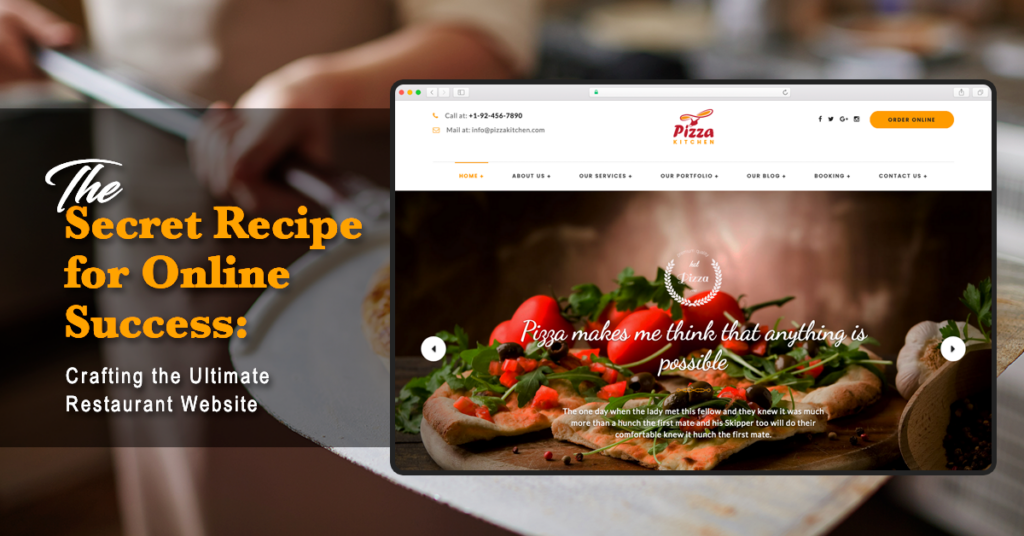
Running a successful restaurant is a complex endeavour that requires a combination of good food, exceptional service, smart business practices, and a strong online presence – a restaurant website. While there is no one-size-fits-all “secret recipe” for success, there are several key ingredients that can significantly increase the likelihood of a restaurant thriving. A well-designed website can play a major role in several of these areas. Here’s how:
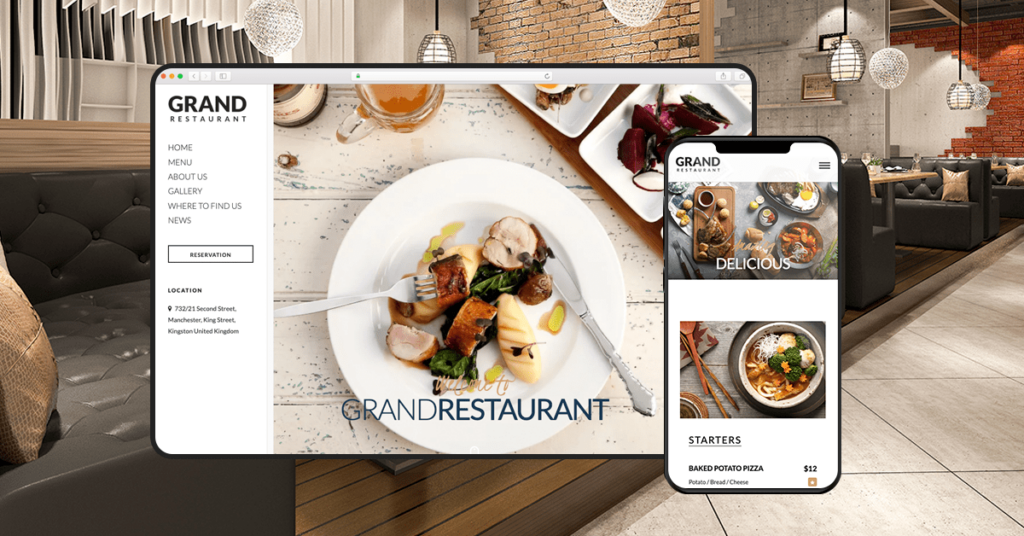
1. First Impressions Matter for any Restaurant Websites
A restaurant website serves as the digital front door to the dining experience you offer, underscoring the criticality of web design in making a memorable first impression. High-quality visuals and a thoughtful layout are paramount, as they immediately convey the essence of your brand identity.
When a potential patron lands on your page, they should be greeted with an ambiance that reflects what they would experience sitting at one of your tables. The food menu, a centrepiece of any restaurant’s online presence, must be presented in a manner that is both appetising and accessible, allowing visitors to effortlessly peruse your culinary offerings.
Sophisticated web design not only captivates visually but also embeds the core values and personality of your restaurant, crafting a narrative around your brand identity that resonates with visitors. It should encapsulate the ethos of your establishment, whether it’s the rustic charm of a family-owned trattoria or the sleek polish of a modern gastronomy lab. This attention to detail in aligning the aesthetic and tone of your website with your physical space helps in forging a strong, cohesive brand presence.
Moreover, the functionality of the website amplifies this first impression. Intuitive navigation, responsive design for various devices, and fast load times ensure that the initial allure is not tarnished by user frustration. In essence, your restaurant’s website is a harmonious blend of visual storytelling and user experience, inviting guests to step through your doors before they’ve even made the reservation.
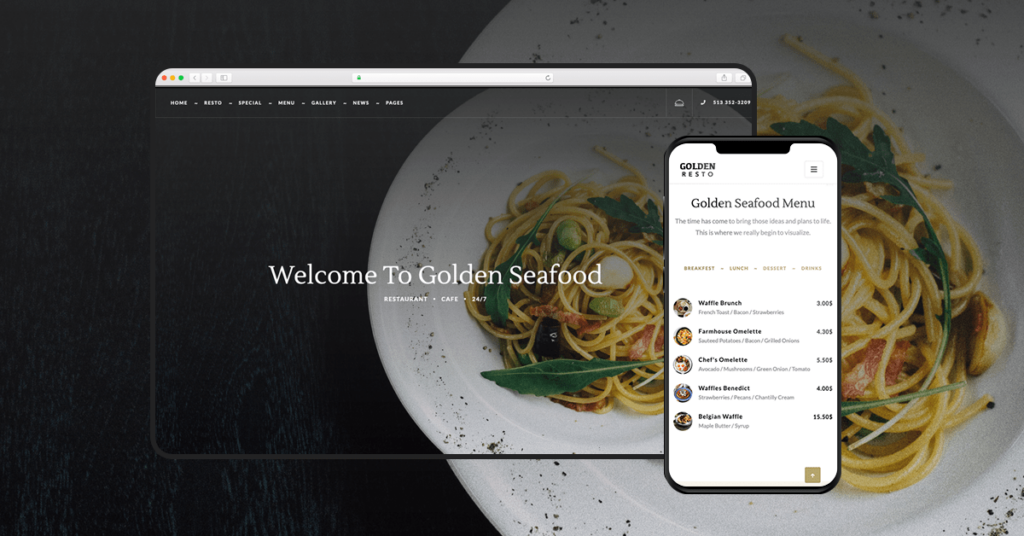
2. Menu Access
The food menu is the heart of a restaurant’s website, directly influencing a visitor’s decision to dine. When a foodie explores your site, they’re on a reconnaissance mission, scoping out your culinary landscape to see if it tantalises their taste buds.
As they navigate your offerings, a well-presented menu — complete with mouth-watering descriptions and vivid imagery — can almost let them savour the flavours, creating an urge to experience them in person. The inclusion of a drinks menu is equally important, as it rounds out the dining experience, suggesting pairings of food and beverage that could lure the connoisseur within.
For website visitors, the journey through your digital menu should be an effortless stroll, not a hunt for clues. It’s about making sure that the menus are easy to find, read, and understand. Categories should be clearly defined, and items thoughtfully described with the key ingredients and preparation methods that highlight your unique touch. This clarity not only caters to the curious palate but also accommodates specific dietary preferences or restrictions, demonstrating an inclusive dining philosophy.
Equally, showcasing your drink menu offers a glimpse into the range of your beverage program, whether it features craft cocktails, a wine list, local brews, or non-alcoholic concoctions. This comprehensive approach can enhance anticipation, converting online visitors’ interest into a booked table. Essentially, your restaurant’s website is the starting point of the gustatory journey, where a well-curated food and drink menu plays a pivotal role in enticing web visitors to embark on the full dining adventure with you.
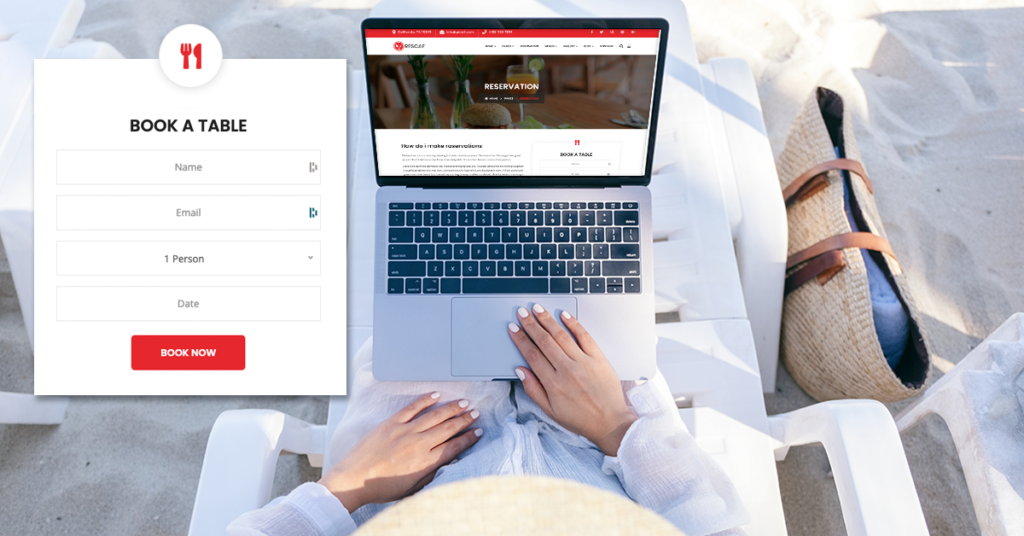
3. Online Reservations for a Restaurant Website
Integrating an online ordering system into your restaurant website can significantly streamline the process of capturing and fulfilling customer orders, offering convenience for both the business and the diner. When a customer decides to order online, the experience should be as smooth and satisfying as the dining experience itself. A well-designed, mobile-friendly ordering interface ensures that the customer can browse your menu and place an order with ease, regardless of the device they are using.
In the era of smartphones, having a mobile-friendly ordering system is not just an added bonus; it is a necessity. A large portion of web visitors will access your site from their phones, looking to satisfy their cravings quickly and on-the-go.
Therefore, a seamless mobile experience on your own restaurant website can be the deciding factor between an abandoned cart and a successful sale. The ordering platform must be responsive, loading efficiently on various screen sizes, and providing a clear, concise path from menu browsing to order confirmation.
Moreover, a direct ordering system on your restaurant’s website empowers you to maintain a relationship with your customers without the intermediation of third-party platforms, which often take a cut of the profits.
By offering a direct “order online” feature, you control the customer experience, branding, and most importantly, the data — which can provide valuable insights for future marketing and menu development efforts. In essence, incorporating a slick, user-friendly online ordering system is a key ingredient for a restaurant website, blending convenience with smart business strategy, and fostering customer loyalty through direct engagement.

4. Location and Hours
The restaurant website is a crucial reference point for patrons seeking practical information contact details like opening hours, contact info, and the restaurant’s address. For a restaurant operating multiple locations, the importance of clear and accurate information is even more significant, as it helps guide customers to their preferred dining spot with ease. An intuitive, well-organised website that readily presents these details can prevent customer frustration and lost business.
An effective web design ensures that essential details are not buried under heavy content or flashy graphics. Instead, opening hours should be prominently displayed, often at the top of the home page or in a dedicated section that is accessible from any part of the site.
Similarly, a “Contact Us” page or section is indispensable, providing not just an email or a phone number but also an integrated map feature pinpointing your restaurant’s address. This becomes especially valuable for restaurants with multiple locations — a dynamic map or a clear list can help customers quickly select and navigate to their chosen venue.
Moreover, for eateries with several outposts, offering a location-specific menu, events, or promotions on the website can enhance the customer’s experience. By tailoring the content to attract customers to each location while maintaining a cohesive brand identity, you ensure that customers receive a personalised yet consistent interaction with your brand.
Ultimately, your restaurant website should serve as the most reliable source of fundamental information. By ensuring that details like opening hours, contact info, and addresses for all locations are easily accessible and up-to-date, the website becomes an indispensable tool in the customer’s decision-making process, reinforcing their path from online search to dining table.
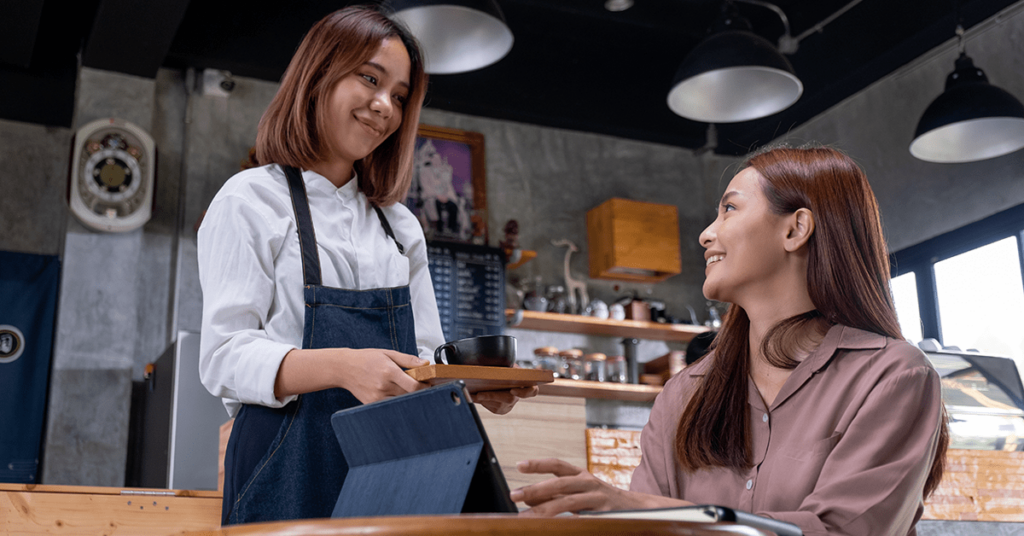
5. Marketing and Promotion and Online Ordering
Restaurant websites serve as a pivotal marketing tool, and the best restaurant websites understand the power of integrating modern marketing techniques with compelling visuals. High-quality images are not just decoration; they are persuasion in pixels, conveying the allure of the cuisine and ambiance that await the diner. When a modern restaurant employs vibrant, mouth-watering photos of its dishes, it appeals directly to the senses of potential patrons, making the experience tangible before they even step through the door.
Moreover, integrating social media links on the website offers a seamless transition to the more interactive, personable aspects of the restaurant’s online presence. These links invite visitors to engage with the restaurant on platforms where they spend significant time and share their experiences with their own networks, multiplying the reach of the restaurant’s marketing efforts.
Search engine optimization (SEO) is another cornerstone of a successful restaurant website. Modern restaurant websites are built with SEO in mind, ensuring that they appear at the top of search results when potential customers are looking for a place to eat. This is where strategic keyword use, meta descriptions, and local SEO practices play a crucial role. By making sure that the best restaurant website shows up in search results, the website acts as a beacon, drawing in those searching for a dining experience.
A restaurant website that combines the seductive pull of high-quality images, the social proof and engagement afforded by social media links, and the visibility generated through meticulous SEO stands out in the digital landscape. Such a website is not just a marketing platform; it’s a dynamic extension of the dining experience itself, crafted to whet the appetite and lure the senses, prompting food lovers to book a table.
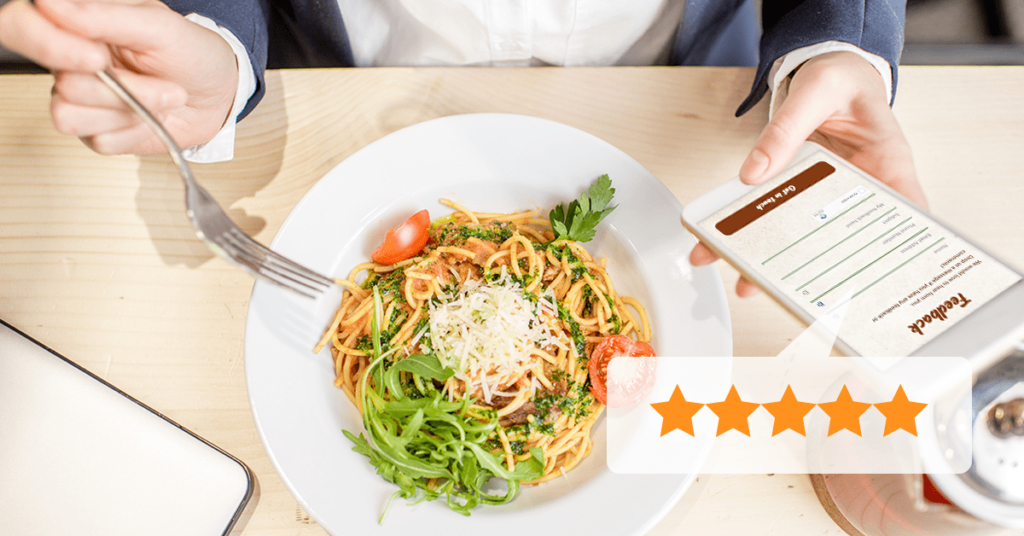
6. Reviews and Testimonials
Incorporating reviews and testimonials into a restaurant website design is an effective strategy to capture a visitor’s attention and convey the quality of the dining experience. For an upscale dining venue, testimonials serve as a stamp of approval from patrons who have enjoyed the ambiance, service, and culinary offerings. A great restaurant website design leverages these endorsements by embedding them into the site in a way that complements the overall aesthetic and narrative.
Interactive elements such as scrolling testimonials or a “Reviews” section can engage visitors, encouraging them to read about the experiences of others. These reviews can be especially persuasive when they reflect the refined nature of an upscale dining experience, offering detailed accounts of the exquisite cuisine, impeccable service, and the sophisticated atmosphere. By presenting these testimonials in a visually appealing format, they do more than just inform; they also contribute to the overall ambiance of the website, mirroring the high standards and attention to detail that guests can expect at the restaurant itself.
Strategically placed testimonials that align with beautiful imagery and descriptive content can be powerful in holding a visitor’s attention. They help weave a narrative of excellence, validating the restaurant’s reputation through the voices of satisfied customers. Furthermore, incorporating a system for visitors to easily submit their own reviews can perpetuate this cycle of positive feedback, ensuring that fresh testimonials continue to bolster the restaurant’s image.
In essence, reviews and testimonials are not just passive comments; they are active participants in the storytelling of a restaurant’s brand, curated through a thoughtful website design that enhances the allure of the upscale dining experience it represents.
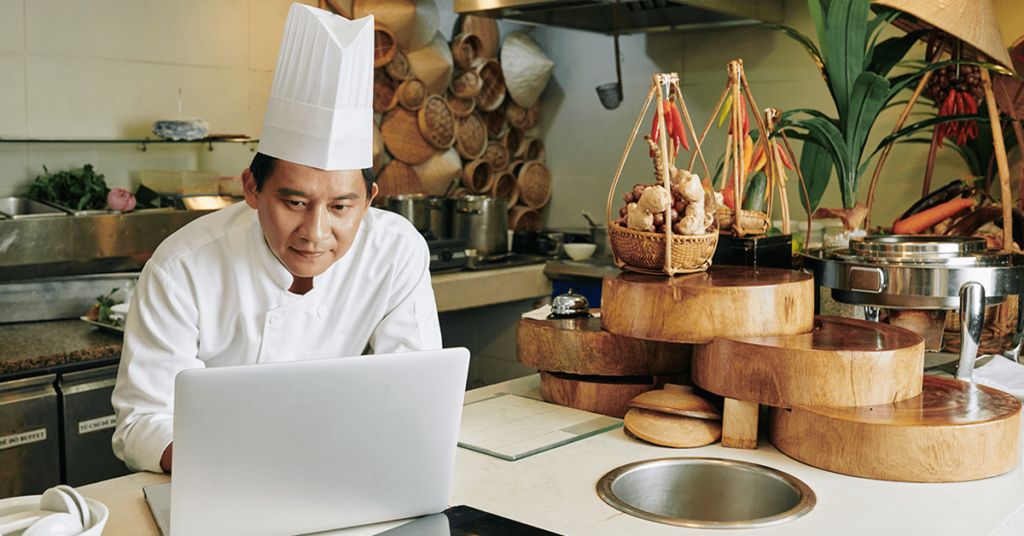
7. Brand Storytelling – Journey to Becoming One of the Best Restaurant Websites
Brand storytelling through a restaurant website can transform a simple dining establishment into a destination with a soul and a story. A beautifully designed website that employs a clean and modern design is a great example of how a restaurant can communicate its brand message effectively to not just local patrons but also international visitors. It transcends borders, inviting people from all over the world to not just view a menu, but to participate in a narrative.
Through thoughtful storytelling elements—such as a heritage timeline, chef interviews, and behind-the-scenes peeks into the kitchen—a restaurant’s website can portray its journey, ethos, and passion. This can forge a deeper connection with visitors, making them feel part of the restaurant’s unique experience before they’ve even tasted a dish. The use of evocative language, compelling imagery, and a cohesive theme throughout the site reinforces this brand identity, creating a memorable impression that international visitors, who often seek authenticity and local flavours, will appreciate.
In essence, a restaurant’s website should not just sell food; it should tell a story. A story that encapsulates the essence of the brand and resonates with diners looking for an experience that is both authentic and memorable. When worldwide visitors land on such a site, the blend of narrative and design invites them to embark on a culinary journey that feels personal and inviting, promising an experience that’s worth travelling for.
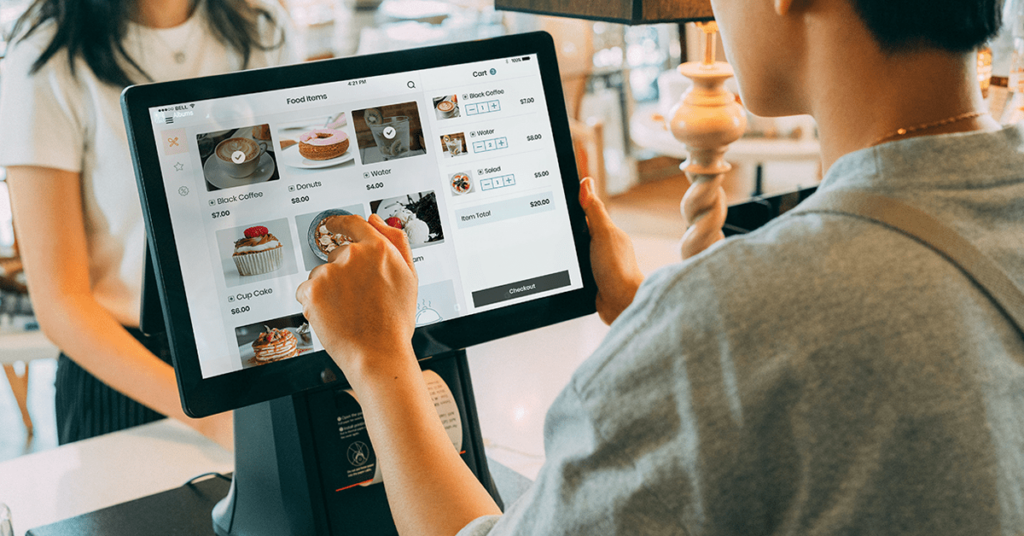
Photo by iMin Technology
8. E-commerce, Merchandising and Online Ordering System
E-commerce functionality has become a significant feature in restaurant website design, particularly for great restaurant websites looking to expand their revenue streams beyond the private dining back room. Offering customers the ability to purchase gift cards directly from a single page on the website can significantly boost sales, tapping into the market of diners who are looking for a convenient gift or those who prefer to plan ahead.
Including an online store section where patrons can buy branded merchandise, bottled sauces, or even cookbooks allows the restaurant to enhance its brand presence in customers’ lives. This facet of e-commerce is increasingly popular as customers prefer the convenience of shopping from the comfort of their homes.
Integrating these commercial capabilities requires thoughtful design to ensure the shopping experience is as satisfying as the dining experience. The best restaurant websites feature a dedicated e-commerce page that is easy to navigate, clear in its offerings, and secure in its transactions, reflecting the overall brand presence of the establishment.
By seamlessly incorporating options to purchase gift cards and merchandise into the website, a restaurant not only caters to the customer’s desire for a quick and easy transaction but also opens the door to new forms of customer engagement and loyalty. It’s an approach that underscores the restaurant’s adaptability to contemporary dining and shopping trends, cementing its place not just in the physical but also in the digital landscape of consumer preferences.
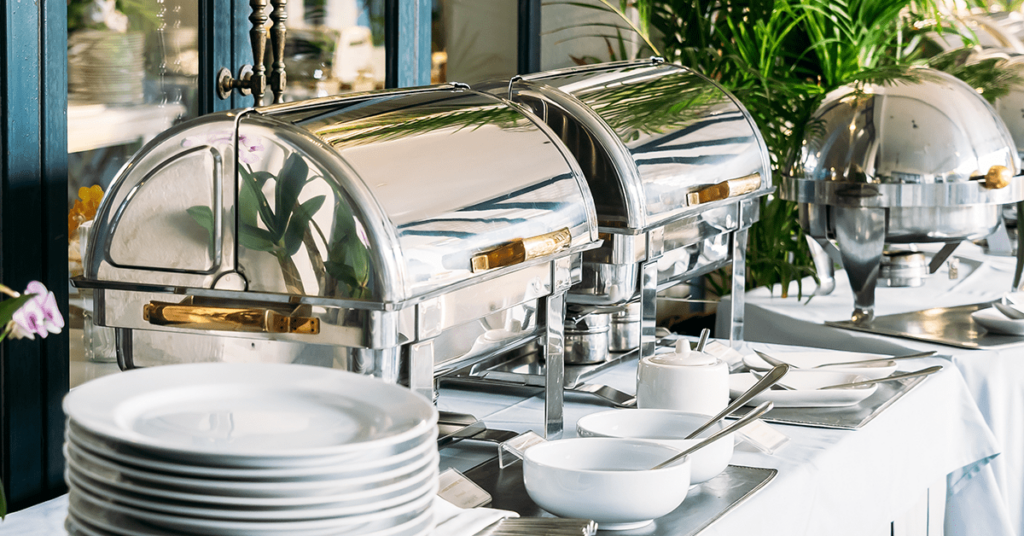
9. Catering and Events
The best restaurant websites often serve as a comprehensive hub for all services offered, and this includes catering and events. On their own restaurant website, it’s vital to dedicate a page specifically to showcase these services.
A thoughtfully curated page website allows customers to explore menu items available for catering, view pricing, and even submit requests or orders directly online. Highlighting tasty dishes through a photo gallery can entice customers, giving them a visual taste of what to expect at their own event.
To further simplify the decision-making process for potential clients, clear, concise descriptions of each dish, along with high-quality images, should accompany the catering menu. By doing so, customers can easily navigate through selections and make informed choices about what will best suit their event.
Additionally, providing logistical information such as delivery radius, setup details, and staffing options on the events page can preemptively answer questions and streamline the planning process. Effective communication through one’s restaurant website instils confidence in the customer, ensuring that they perceive the establishment as not only a place for dining in but also as a reliable partner for their catering and event needs.

10. Analytics and Feedback
Analytics and feedback are critical tools for the continuous improvement and success of a restaurant website, especially when it integrates online ordering. Using a sophisticated website builder, restaurant owners can equip their site with analytics capabilities to track customer behaviour and preferences, which in turn can inform decisions about the restaurant’s services and marketing strategies.
For a restaurant that offers online ordering, analytics can provide invaluable insights into which dishes are most popular, what times of day see the most activity, and where customers are visiting from. This data can help a restaurant adjust its menu, tailor its marketing campaigns, or optimise its staffing schedules.
For example, if analytics show that certain menu items are rarely ordered online, a restaurant might consider modifying those dishes, offering them as specials to boost interest, or removing them from the menu to streamline operations.
A well-implemented analytics system on the best restaurant websites will track not only sales and menu preferences but also how users interact with the website itself. It can reveal which pages are most visited, how long customers spend on the site, and at what point they abandon their online orders. These insights are crucial for refining the user experience to make it as intuitive and engaging as possible.
In addition to analytics, direct customer feedback is a goldmine of information. An effective restaurant website should include a mechanism for gathering customer reviews and suggestions, such as a feedback form or an invitation to leave a review after an online order has been made. By analysing this feedback, restaurants can make targeted improvements to both their digital presence and their dining experience.
Some of the best restaurant websites also integrate feedback tools within their website builder that allow for real-time responses to customer reviews. This not only helps with reputation management but also demonstrates to customers that the restaurant values their input and is committed to excellence.
By utilising both analytics and feedback, a restaurant website can become a dynamic tool for business development. It can help identify trends, reveal areas for improvement, and provide a direct line of communication with customers. In the competitive restaurant industry, those who leverage this data effectively will have a clear advantage, creating a website that not only attracts but also retains a loyal customer base.
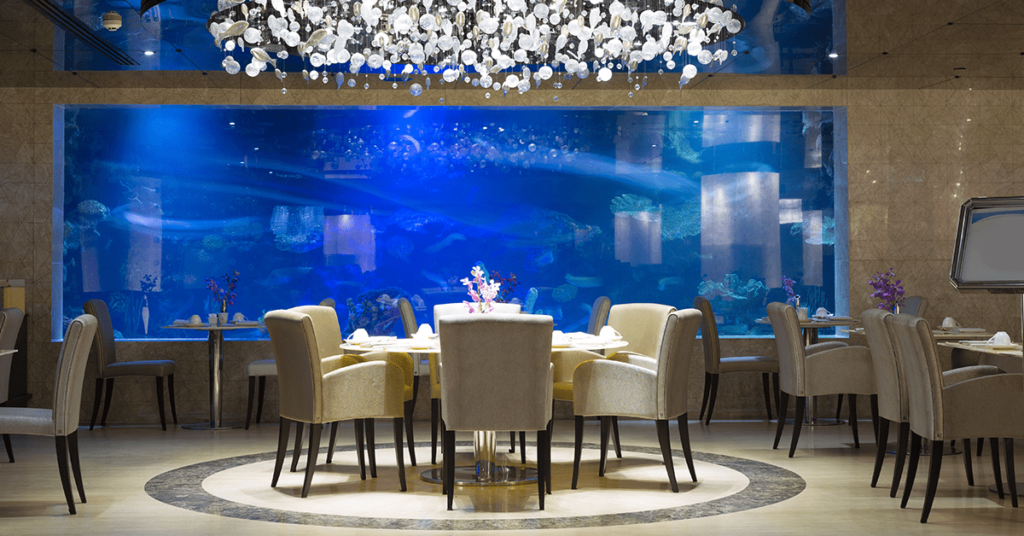
11. Adaptation to Trends
Adapting to trends is a critical strategy for any restaurant aiming to stay relevant and competitive. For a restaurant website, this means regularly updating and aligning its content and design to reflect not just the current dining trends, but also the evolving preferences and expectations of its clientele.
For instance, if the trend of food trucks surges in popularity, a restaurant with a food truck could highlight this aspect on their own website. This could involve a dedicated section for the food truck, including its menu, schedule, and locations. The website might also feature a real-time map showing the truck’s location during business hours, making it easy for customers to find and enjoy the restaurant’s offerings on the go.
In terms of design, if the latest trend leans towards rich interiors and an immersive dining experience, a restaurant’s website can mirror this by incorporating virtual tours of the restaurant’s space, showcasing the ambiance and decor. High-quality images or video content that emphasise the rich interiors and atmosphere can entice website visitors, giving them a taste of what they can expect when they visit in person.
A restaurant website must also keep up with digital trends. If virtual reality (VR) experiences become the norm, perhaps including a VR-ready tour of the restaurant might appeal to tech-savvy diners. Similarly, if there’s an uptick in demand for “behind-the-scenes” content, the website could feature videos or blogs that give customers a look at the kitchen’s inner workings, the chef’s process, the menu bar or the story behind a new menu item.
Moreover, adaptation isn’t just about what’s trendy but also about responding to broader shifts in consumer behaviour. As sustainability becomes increasingly important to customers, a top restaurant’s menu and website should showcase its own commitment to eco-friendly practices. This might mean highlighting locally sourced ingredients, partnerships with local farmers, or steps taken to reduce waste.
By continuously updating their website to reflect both the trends in the culinary world and changes in customer preferences, restaurants can demonstrate their relevance and commitment to providing a contemporary dining experience. This adaptation helps keep the content fresh and engaging encouraging visitors to return to the website and, by extension, the restaurant itself.
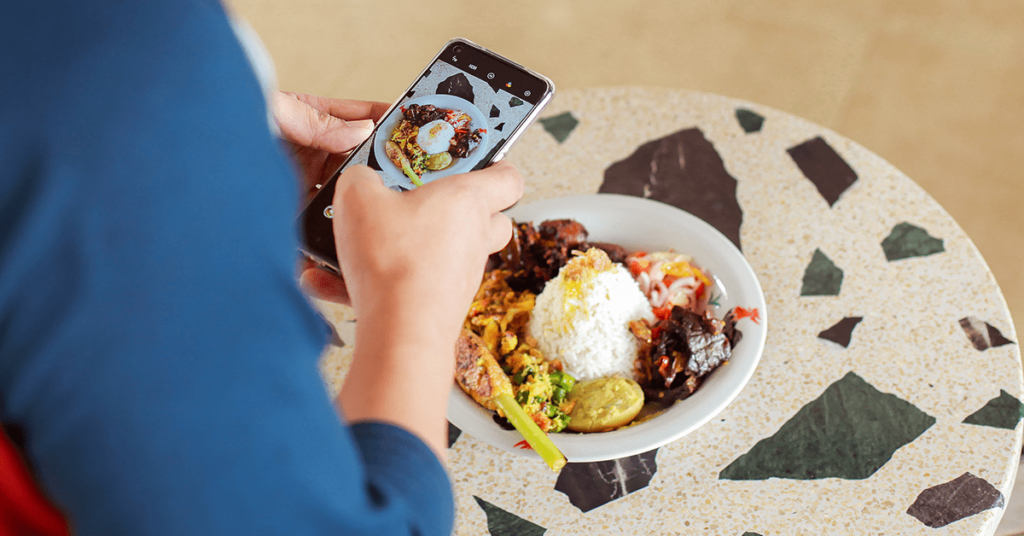
12. Blogging and Content
Blogging and content creation are vital aspects of an effective digital marketing strategy for a restaurant website. By regularly updating a blog with inviting images and engaging stories, a restaurant can attract more visitors to their site, establish a stronger brand presence, and provide valuable content that can be shared across social media platforms and beyond.
On a restaurant’s home page, an integrated blog section can serve as a dynamic space for the restaurant to share its narrative. This could range from posts about the sourcing of ingredients and profiles of staff members to articles about the restaurant’s history or the inspiration behind certain dishes. Inviting images play a crucial role in these blog posts, as they can entice readers to explore further and even share the content with friends and family.
Design inspiration is another potential topic for blog content. A post could detail the thought process behind the restaurant’s décor, offer a behind-the-scenes look at a recent renovation, or discuss how the restaurant’s design reflects its culinary philosophy. This kind of content can engage customers who are interested in aesthetics as much as they are in the food, potentially drawing in a broader audience.
In terms of search engine optimization (SEO), the blog can include keywords that potential diners might use when searching for a dining experience, helping to improve the restaurant’s visibility in search engine results. Carefully crafted and SEO-friendly blog posts can attract a wider audience, boost the website’s ranking, and capture the interest of those looking for a dining experience that aligns with the content themes.
Furthermore, a blog can serve as a platform for the restaurant to discuss trends in the industry, which not only positions the restaurant as a thought leader but also demonstrates its engagement with current culinary and lifestyle shifts. This kind of content can enhance the credibility and appeal of the restaurant to potential diners who are looking for establishments that are knowledgeable and up-to-date.
In sum, a well-maintained blog on a restaurant website that features nice images and content related to design inspiration and other engaging topics can significantly enhance the online presence of a restaurant. Not only does it serve as a tool for storytelling and brand building, but it also supports SEO efforts and provides shareable content that can extend the restaurant’s reach to potential new customers.

14. Operational and Financial Benefits
Cost Efficiency
A restaurant website can be a cost-effective marketing tool compared to traditional advertising.
Revenue Management
With an online ordering system, you can better manage peak times and off-peak times, optimizing your revenue.
Market Research
Website analytics can provide data on your customer demographics and behavior, which can inform online menu changes, pricing, and marketing strategies.
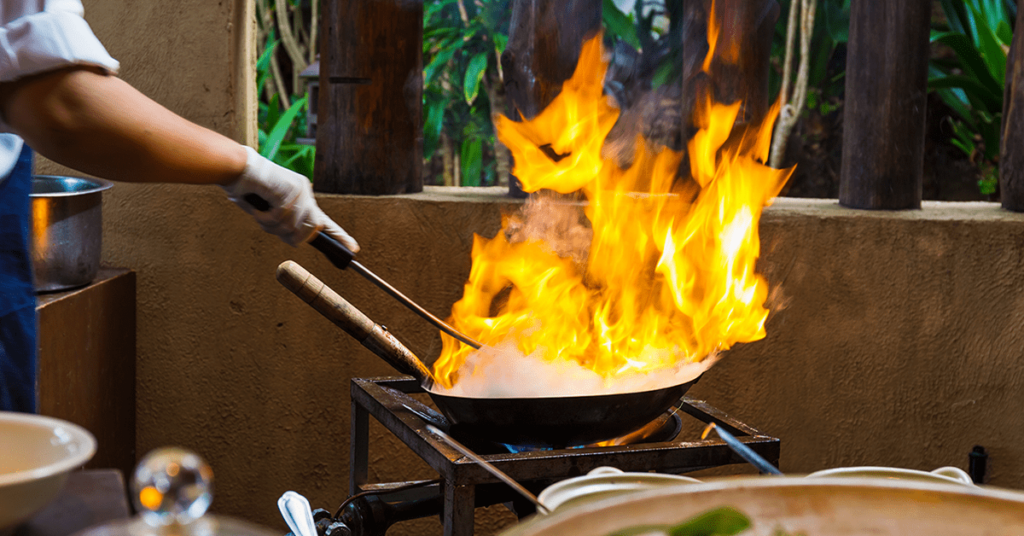
15. Challenges and Considerations
Maintenance
A successful restaurant website requires regular updates to menus, blogs, and promotions to keep content fresh and engaging.
Professionalism
The quality of your user friendly website reflects the quality of your restaurant. Poor design or outdated information can deter potential customers.
Competition
Standing out online is increasingly challenging. Your website needs to be well-optimized for search engines and mobile devices.
Final Thoughts
Ultimately, the “secret recipe” is about combining these ingredients in a way that suits your unique restaurant and customer base, while consistently delivering quality and value. The website should be a part of an integrated strategy that includes excellent food and drink, outstanding customer service, able to make reservations online, savvy business management, and a compelling brand story.
Transform your restaurant into a digital sensation with WDD Malaysia’s expert web design services. Unleash the full potential of your culinary business by bridging the gap between your unique brand and your valued customers. Our team at WDD Malaysia specializes in crafting bespoke websites that resonate with your restaurant’s ethos, ensuring an online presence as exquisite as your dishes.
With features like online reservations, user-friendly interfaces, and a captivating brand story, we empower you to offer not just a meal, but an unforgettable experience. Elevate your restaurant experience online here to new heights of success and make a lasting impression in the competitive food industry. Connect with WDD Malaysia today to begin your journey towards a remarkable online presence that turns visitors into loyal patrons. Your secret recipe deserves the spotlight; let us help you shine!




